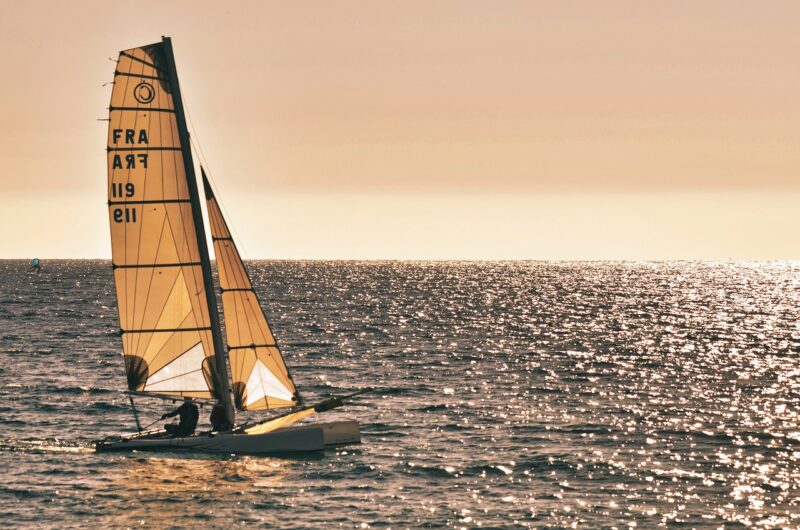How the Evolution of Boats, Ships, and Sailing Changed the Course of History Forever
November 17, 2024

The story of human civilization is intricately woven with the development of maritime vessels. Boats and ships haven’t just transported goods and people across waters; they have facilitated trade, exploration, and cultural exchanges, thereby altering the fabric of societies throughout history. Join us as we explore how the evolution of boats, ships, and sailing has changed the course of history in countless ways.
1. The Dawn of Watercraft: Early Boats and Their Significance
The earliest watercraft date back to around 10,000 BCE, with rudimentary canoes carved from tree trunks found in various archaeological sites around the world. These early boats represented humankind’s first forays into navigating rivers, lakes, and coastal waters, enhancing survival through fishing and transportation.
These primitive vessels marked the beginning of human adaptation to aquatic environments. The ability to fish from a boat enabled communities to gain a more stable source of food, leading towards settling down and forming more complex societies.
The significance of these watercraft can’t be overstated as they laid down the groundwork for all future maritime endeavors. They allowed ancient people not only to gather food but also to expand their territories and establish trade routes.
2. Ancient Innovations: The Egyptian and Phoenician Advances
As civilizations blossomed, boating technology advanced. The Egyptians developed larger wooden boats equipped with sails, using the Nile’s currents to facilitate trade with neighboring regions. Their strong ships could carry not only heavy goods like grain but also monumental stones used in construction.
Pharaohs leveraged these vessels to assert dominance and influence, navigating through intricate river systems while expanding their realm’s economic reach.
The Phoenicians, renowned for their superior shipbuilding skills, took sailing a step further. They utilized a ship design known as the bireme—one of the largest vessels of its time. These ships became the backbone of trade across the Mediterranean, spreading not only goods but also culture, language, and innovations.
The expansion of maritime trade through these developments fostered interconnectedness that would shape cultures for centuries to come.
3. The Age of Exploration: Navigational Innovations
The period of European exploration in the 15th to 17th centuries is marked by significant advancements in ship design, sailing technology, and navigational equipment. Innovations like the compass and astrolabe came to the forefront, enabling explorers to navigate the open sea with greater accuracy and confidence.
Sailing ships like the caravel were made broader and sturdier, allowing them to withstand longer voyages while being agile enough to navigate coastal routes. Notable voyagers such as Christopher Columbus and Vasco da Gama famously took to the oceans in search of new trade routes and territories.
The maritime expeditions during this age led to the discovery of lands and cultures that had been previously unknown to Europeans. This era fundamentally shifted global dynamics, eventually leading to the establishment of trade empires and colonialism.
Books were written about navigation, and new languages emerged as a result of the blend of cultures. The impact of this age on global commerce, ideas, and power structures can still be traced in modern society.
4. Industrial Revolution: The Birth of Modern Shipping
The Industrial Revolution ushered in a new era for boats and ships, characterized by the transition from sail to steam power. Steamships allowed for more consistent travel timings and could navigate against winds and tides, transforming maritime trade and warfare.
The innovation of iron and steel hulls made ships stronger and more durable, accommodating larger cargo and passenger volumes. The opening of canals like the Suez Canal in 1869 revolutionized global trade routes, dramatically reducing travel times and costs.
This maritime transformation facilitated the global economy’s rapid expansion. Increased shipping volumes enabled raw materials to flow towards industrialized nations while finished goods traveled back to colonies or markets throughout the world.
Additionally, steam-powered ships contributed to globalization momentum, forever altering trade patterns and cultural exchanges.
5. The Modern Era: Shipping Today and the Future
In today’s world, shipping remains a crucial element of global trade. Containerization has revolutionized how goods are transported, making it possible to move enormous volumes with efficiency and cost-effectiveness. Modern ports and ships facilitate trade on an unprecedented scale, underpinning the global economy.
The maritime industry is also adapting to contemporary challenges. With an increasing focus on sustainable practices, significant investment is going into greener technologies, such as wind-assist sails and electric propulsion systems, aiming to reduce the carbon footprint of shipping.
Furthermore, the rise of technology like automation and artificial intelligence is reshaping operational practices, making shipping not only more efficient but also safer.
As the world grapples with climate change and sustainability, the evolution of ships will likely play a critical role in finding solutions—making it imperative that we continue to innovate.
Conclusion: A Legacy Written in Water
The evolution of boats, ships, and sailing has undeniably changed the course of history, influencing cultures, economies, and global interactions. From the simplest canoes to modern container ships, each advancement brought about transformative shifts in how we connect and travel across our world.
As we look toward the future, it’s essential to recognize the ongoing influence of maritime innovations on our society. The legacy of boats and ships is not just confined to the past; it continues to shape our present and will undoubtedly guide our future in navigating waters yet to be explored.







